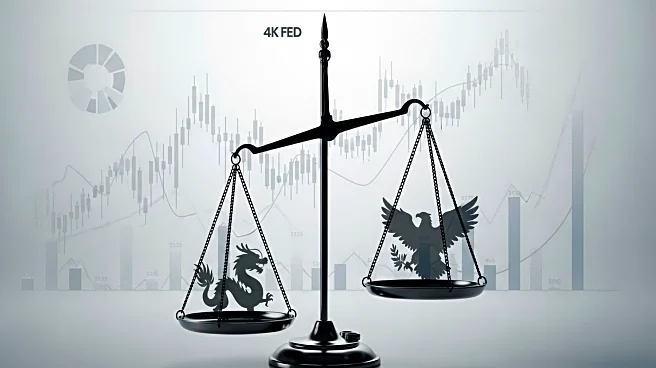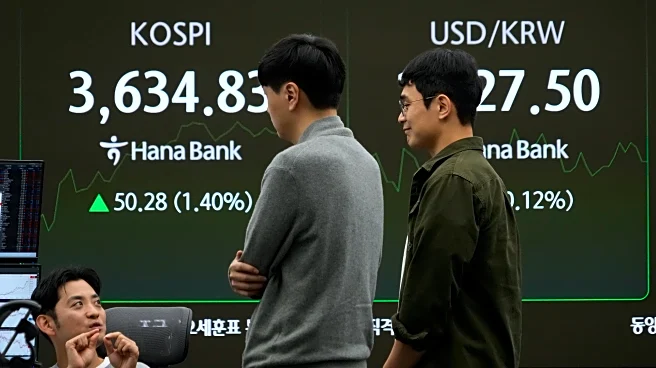What's Happening?
On Tuesday, U.S. stocks rebounded from an early slump, with the S&P 500 rising 0.2% and the Dow Jones Industrial Average increasing by 366 points, or 0.8%. This recovery comes despite escalating trade tensions between the U.S. and China, which initially caused a downturn in major technology stocks. The Nasdaq composite, however, slipped by 0.3%. The fluctuations in the market are attributed to China's Commerce Ministry banning dealings with subsidiaries of South Korean shipbuilder Hanwha Ocean, affecting President Trump's efforts to revitalize the American shipbuilding industry. The trade conflict has led to new port fees imposed by both nations, impacting international shipping and shipbuilding sectors.
Why It's Important?
The ongoing trade tensions between the U.S. and China are significant due to the economic stature of both countries as the world's largest economies. The conflict has introduced unpredictability in the market, particularly affecting technology stocks that rely heavily on China for materials and manufacturing. The U.S. economy has so far avoided major impacts from shifting tariff policies, but continued retaliatory tariffs could lead to increased costs for consumers. The situation is further complicated by the U.S. government shutdown, which has halted economic updates crucial for assessing the impact of tariffs. Investors are now looking to company earnings reports for insights into the broader economic picture.
What's Next?
The Federal Reserve is facing challenges in making policy decisions due to a lack of economic data caused by the government shutdown. The central bank has already cut its benchmark interest rate amid concerns about unemployment, and further cuts are expected in upcoming meetings. Wall Street is also anticipating profit reports from major banks and other sectors to gauge market value and economic health. The ongoing trade tensions and tariff policies will continue to be a focal point for investors and policymakers as they navigate the economic landscape.
Beyond the Headlines
The trade tensions between the U.S. and China highlight broader geopolitical dynamics and the strategic importance of international trade relations. The situation underscores the vulnerability of global supply chains and the potential for economic disruptions. Additionally, the focus on shipbuilding and international shipping fees reflects the intricate connections between national policies and global commerce. The evolving trade landscape may lead to long-term shifts in economic strategies and international alliances.












